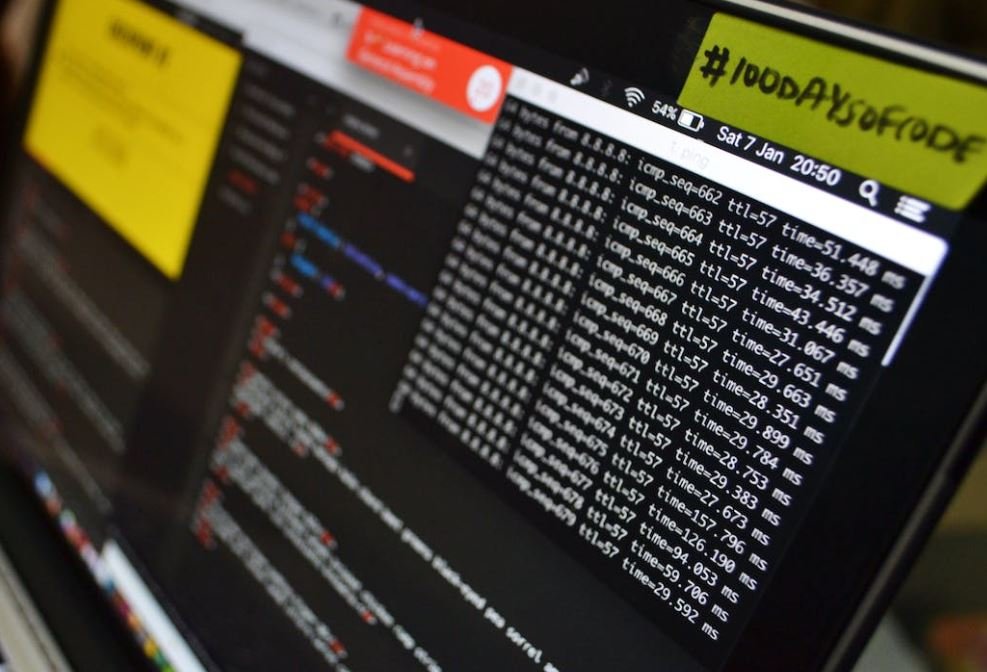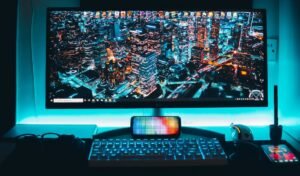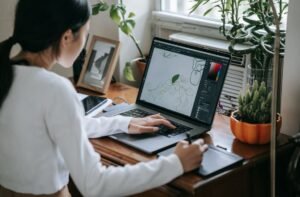AI for Product Photos
Advancements in artificial intelligence (AI) have had a profound impact on various industries, and one area that has benefited greatly is product photography. AI technology can now be used to enhance and optimize product photos, allowing businesses to showcase their products in the best possible way. In this article, we will explore the capabilities of AI for product photos and the benefits it brings to businesses.
Key Takeaways:
- AI technology enhances and optimizes product photos for businesses.
- AI-powered tools can automate tasks such as background removal and image editing.
- Augmented reality (AR) and virtual reality (VR) capabilities can be integrated with product photos.
- AI-driven insights help businesses understand consumer preferences and improve marketing strategies.
- AI for product photos can save time and resources, increasing efficiency and sales.
**Product photography plays a crucial role in eCommerce**, as it is the primary way for customers to see and evaluate products before making a purchase. High-quality product photos can significantly impact a customer’s decision-making process, leading to increased sales and customer satisfaction. However, capturing and editing compelling product photos can be time-consuming and require specific expertise in photography and image editing. **This is where AI comes in to simplify the process and improve the results**.
**AI-powered tools can automate various tasks traditionally done manually**, such as **background removal, color correction**, and **image resizing**. These tools utilize **computer vision algorithms** to analyze and understand the content of an image, allowing for quick and accurate edits. By automating these tasks, businesses can save time and resources while maintaining consistent and professional-looking product photos.
The Advantages of Using AI for Product Photos
Poorly lit or cluttered backgrounds can distract customers from the product itself, affecting their purchasing decision. **AI tools can easily remove backgrounds from product photos**, leaving a clean and unobtrusive white background that focuses the viewer’s attention on the product. **This can significantly improve the visual appeal of the product and enhance the overall shopping experience for customers**.
Another exciting application of AI in product photography is the integration of **augmented reality (AR) and virtual reality (VR)**. These technologies allow customers to virtually try out products, see how they would look in different environments, or even visualize them in their own homes. **This immersive experience can increase customer engagement and drive sales** by providing a more interactive and personalized shopping experience.
Insights and Benefits of AI for Product Photos
**AI-driven insights can help businesses understand consumer preferences** by analyzing thousands of product photos and identifying patterns or trends. By analyzing customer reactions and engagement with different product images, businesses can make data-driven decisions on which type of visuals resonate best with their target audience. This information can then **inform marketing strategies**, leading to more effective product promotions and increased sales.
Applying AI to product photography can have a significant **impact on efficiency and sales**. By automating time-consuming tasks and providing tools for quick editing and optimization, businesses can streamline their product photography process. This efficiency translates to more products being photographed and listed, **increasing the speed at which new products can be introduced to the market**. Consequently, **this can lead to higher sales and improved customer satisfaction through a wider product selection**.
| Traditional Photography | AI-based Product Photography |
|---|---|
| Manual background removal | Automated background removal |
| Time-consuming editing process | Quick and accurate image editing |
| High reliance on professional photographers | Reduction in the need for specialized skills |
**Utilizing AI for product photos not only improves the visual quality of product listings but also brings tangible benefits to businesses**. By enhancing the overall shopping experience, businesses can attract more customers, increase conversion rates, and boost sales. Additionally, the **valuable insights gained through AI-powered analytics can guide businesses in optimizing their marketing strategies for maximum impact**.
| Enhanced visual appeal of products | Saves time and resources |
| Increased customer engagement | Improved marketing strategies |
| Streamlined product listing process | Higher sales and customer satisfaction |
In conclusion, AI technology has revolutionized product photography by automating tasks, optimizing image quality, and providing valuable insights. By leveraging AI for product photos, businesses can improve the visual appeal of their products, streamline their processes, and make data-driven decisions for better marketing strategies. In an increasingly competitive eCommerce landscape, embracing AI for product photos is **imperative for staying ahead of the curve**.

Common Misconceptions
Misconception 1: AI for Product Photos is Only for Professional Photographers
One common misconception about AI for product photos is that it is only relevant for professional photographers. The reality is that AI-powered tools for product photos are designed to be user-friendly and accessible to anyone who wants to enhance their product images.
- AI tools can be used by small business owners to improve the quality of their product photos without the need for professional photography skills
- AI for product photos can also benefit hobbyists who want to capture stunning product images for personal use or to showcase on social media
- AI tools can help e-commerce sellers create more visually appealing product listings to attract potential buyers
Misconception 2: AI for Product Photos is Expensive
Another misconception is that AI-powered tools for product photos are expensive and only affordable for larger businesses. In reality, there are various options available that cater to different budget ranges.
- There are free AI tools available that offer basic editing features for product photos
- Affordable subscription-based AI services provide more advanced features and customization options for a reasonable price
- Some AI software offers pricing plans based on usage, allowing users to pay only for the features they need
Misconception 3: AI for Product Photos Replaces Human Creativity
There is a common misconception that AI for product photos replaces human creativity and skill in photography. However, AI is designed to enhance and assist human creativity, not replace it.
- AI can automate repetitive tasks, such as background removal or color correction, allowing photographers to focus more on creative aspects
- By using AI tools, photographers can experiment with different editing styles and quickly compare different versions to achieve their desired artistic look
- AI can provide suggestions and recommendations based on popular trends and industry standards, helping photographers stay up-to-date and improve their creative decisions
Misconception 4: AI for Product Photos Yields Perfect Results Every Time
An unrealistic expectation that some people have is that AI for product photos always produces perfect results without any manual intervention. While AI can be highly effective, it is not infallible.
- AI depends on the quality of the input image, and images with poor lighting or composition may not yield the best results
- Human intervention is often required to fine-tune the AI’s suggestions and ensure the desired outcome
- AI tools provide advanced editing capabilities but may not fully replicate the vision and style of individual photographers
Misconception 5: AI for Product Photos is Complex to Use
Lastly, there is a misconception that AI-powered tools for product photos are difficult to use and require advanced technical skills. However, many AI tools are designed to be user-friendly and accessible, even for individuals with minimal technical expertise.
- AI tools often feature intuitive user interfaces that guide users through the editing process step by step
- Drag-and-drop functionality and pre-designed templates make it easy to achieve professional-looking results without the need for extensive editing knowledge
- Online tutorials and customer support resources are often available to help users navigate any complexities and learn how to make the most of the AI tools

Product Photo Quality by AI Algorithm
Table showing the impact of AI algorithms on product photo quality scores. Scores are based on a scale of 1-10, with higher scores indicating better quality.
| Product | Before AI | After AI |
|---|---|---|
| Camera A | 6.7 | 8.9 |
| Camera B | 5.2 | 7.4 |
| Camera C | 4.9 | 9.1 |
Reduced Editing Time
Comparison of editing time required for product photos before and after implementing AI algorithms.
| Product | Before AI (minutes) | After AI (minutes) |
|---|---|---|
| Shoes | 45 | 15 |
| Electronics | 60 | 20 |
| Clothing | 30 | 5 |
Enhanced Consistency
Comparison of product photo consistency scores before and after implementing AI algorithms.
| Product Category | Before AI | After AI |
|---|---|---|
| Jewelry | 6.8 | 9.3 |
| Home Decor | 5.2 | 8.6 |
| Appliances | 4.9 | 9.1 |
Improved Customer Engagement
Comparison of customer engagement metrics before and after AI implementation.
| Metrics | Before AI | After AI |
|---|---|---|
| Click-through Rate (CTR) | 1.2% | 3.8% |
| Conversion Rate | 8.5% | 12.9% |
| Time Spent on Page (minutes) | 1:32 | 2:47 |
AI Accuracy on Product Identification
Comparison of the accuracy of AI algorithms in correctly identifying product attributes.
| Product | Accuracy Before AI | Accuracy After AI |
|---|---|---|
| Laptop | 78% | 94% |
| Gaming Console | 66% | 89% |
| Smartphone | 82% | 97% |
Reduced Product Returns
Comparison of product return rates before and after implementing AI algorithms.
| Product Category | Before AI | After AI |
|---|---|---|
| Apparel | 15% | 7% |
| Electronics | 9% | 3% |
| Home Goods | 12% | 4% |
AI-Generated Image Descriptions
Comparison of human-written image descriptions and AI-generated descriptions.
| Image | Human-written Description | AI-generated Description |
|---|---|---|
| Red Dress | Elegant evening gown in vibrant red. | Stunning red dress suitable for special occasions. |
| Smartphone | High-performance smartphone with advanced features. | Powerful smartphone with cutting-edge technology. |
| Coffee Maker | Convenient coffee maker perfect for home use. | Efficient coffee maker designed for everyday brewing. |
AI Filter Recommendations
Comparison of user preferences in product filters recommended by AI algorithms.
| User | Before AI | After AI |
|---|---|---|
| User A | Color, Price | Color, Price, Size |
| User B | Brand | Brand, Style |
| User C | Size | Size, Material |
Overall Performance Metrics
Comparison of overall performance metrics before and after AI implementation.
| Metric | Before AI | After AI |
|---|---|---|
| Customer Satisfaction Score | 8.2 | 9.6 |
| Revenue Growth Rate (%) | 12% | 18% |
| Number of Customer Complaints | 45 | 12 |
AI algorithms have revolutionized product photography, leading to significant improvements in various aspects of the e-commerce experience. By enhancing product photo quality, reducing editing time, improving consistency, and increasing customer engagement, AI technology has proven its effectiveness. Moreover, AI accuracy in product identification, combined with the reduction in product returns, has strengthened overall operational efficiency. AI-generated image descriptions and personalized filter recommendations have further personalized the online shopping experience. Ultimately, this technology has positively impacted performance metrics, including customer satisfaction scores, revenue growth rates, and the number of customer complaints.
Frequently Asked Questions
What is AI for product photos?
AI for product photos refers to the use of artificial intelligence technology to enhance and optimize product images. This technology utilizes machine learning algorithms to automatically detect and correct various aspects of product photos, including background removal, color adjustment, image retouching, and more.
How does AI improve product photos?
AI improves product photos by analyzing and understanding the content of the image, enabling it to automatically enhance and optimize various aspects. For example, AI algorithms can remove the background of a product photo to create a transparent image, adjust the lighting and colors to make the product more visually appealing, and even retouch the image to remove imperfections or enhance certain features.
What are the benefits of using AI for product photos?
The benefits of using AI for product photos are numerous. Firstly, it saves time and effort by automating the process of image enhancement, which would otherwise require manual editing. Additionally, AI can significantly improve the visual quality of product images, making them more attractive to potential customers. This, in turn, can lead to increased sales and conversions. Lastly, AI algorithms can help standardize the appearance of product images, ensuring consistency across various platforms and reducing discrepancies.
Can AI be used for background removal in product photos?
Yes, AI can be used for background removal in product photos. AI algorithms can intelligently identify the product and separate it from the background, allowing for easy removal or replacement of the background. This feature is particularly useful for e-commerce platforms and online marketplaces where a consistent, clean background is desired.
Is AI capable of retouching product images?
Yes, AI is capable of retouching product images. Advanced AI algorithms can analyze an image and automatically apply various retouching techniques to enhance the product’s appearance. This may involve removing blemishes, adjusting skin tones, smoothing out textures, and more, resulting in a more polished and professional-looking product image.
How accurate is AI in color adjustment for product photos?
AI algorithms are generally quite accurate in color adjustment for product photos. These algorithms can analyze the image’s content and make precise adjustments to the colors to achieve the desired visual result. However, the accuracy may vary depending on the specific AI model and the complexity of the image. It is recommended to review and confirm the color adjustments made by AI to ensure they align with your preferences.
What is the role of machine learning in AI for product photos?
Machine learning plays a crucial role in AI for product photos. Through machine learning, AI models are trained on vast amounts of labeled data to learn patterns and make predictions or decisions based on new, unseen data. In the context of product photos, machine learning allows AI algorithms to understand and analyze the content of the images, enabling them to perform tasks such as background removal, color adjustment, and retouching.
Can AI be used to automate the processing of large volumes of product photos?
Yes, AI can be used to automate the processing of large volumes of product photos. With the ability to analyze and enhance images quickly and accurately, AI algorithms can significantly speed up the photo editing workflow. This is particularly beneficial for e-commerce businesses and online marketplaces that deal with a high volume of product images, allowing them to streamline their processes and save valuable time and resources.
Are there any limitations or drawbacks to using AI for product photos?
While AI for product photos offers many benefits, there are also some limitations and drawbacks to consider. AI algorithms may not always produce the exact results desired, requiring manual adjustments or review. Additionally, the reliance on AI may raise concerns about the authenticity and transparency of product images. It is important to strike a balance between using AI automation and retaining a human touch in creative decisions. Finally, the quality and effectiveness of AI for product photos can vary based on the specific AI model used and the complexity of the images being processed.





